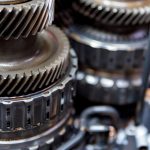Fitting universal parts to your UK classic car can feel daunting. With a range of options available, it’s essential to understand compatibility and quality to preserve your vehicle's authenticity. Not all parts are created equal, and making informed choices not only enhances performance but also maintains value. This guide breaks down key considerations and offers practical tips to ensure your classic car remains a timeless treasure.
Overview of Universal Parts for Classic Cars
Universal parts are components that are designed to fit multiple vehicle models, offering a versatile solution for classic car enthusiasts. These parts are crafted to meet the needs of various makes and models, making them a practical choice for those restoring or maintaining vintage vehicles. The primary purpose of universal parts is to provide a cost-effective and readily available alternative to model-specific components, which can be scarce or expensive.
Also read : Maximizing Storage Efficiency: Creative Ways to Customize Your British SUV”s Boot Space
One of the key benefits of using universal parts in classic cars is their compatibility across different vehicles. This compatibility simplifies the restoration process, as enthusiasts can source parts without worrying about finding a perfect match for their specific car model. Additionally, universal parts can often be found at a lower cost, reducing the financial burden associated with maintaining a classic car.
Common types of universal parts available for classic cars include items like brake systems, suspension components, and electrical wiring. These parts are engineered to meet general specifications, ensuring that they perform effectively in a range of vehicles. By opting for universal parts, classic car owners can enjoy the benefits of modern technology and materials, enhancing the performance and reliability of their cherished automobiles.
Also to read : Upgrade Your British Classic Car: Install Heated Seats Without Modifying Original Wiring
Compatibility Considerations
Understanding compatibility is crucial when selecting universal parts for classic car models. Not all parts fit every vehicle, so consider factors like the car's make, model, and production year. These elements influence the fitting of components, ensuring they function properly and safely.
Before purchasing, it's wise to assess compatibility by researching the specific requirements of your classic car. Check the part's specifications and compare them with your vehicle's needs. Consulting with automotive experts or using online databases can offer valuable insights into which parts are suitable for your car.
Some popular classic car models, such as the Ford Mustang, Chevrolet Camaro, and Volkswagen Beetle, have a wide range of universal part options available. These parts often include brake systems, suspension components, and electrical wiring that are designed to fit multiple models. By carefully evaluating these options, you can ensure that the parts you choose will enhance your vehicle's performance without compromising its integrity.
In summary, focusing on compatibility and fitting is essential for maintaining the authenticity and functionality of classic cars. Doing so will help you make informed decisions when selecting universal parts, ultimately preserving the legacy of your beloved automobile.
Installation Tips for Universal Parts
Installing universal parts in classic cars can be a rewarding DIY project, allowing enthusiasts to enhance their vehicle's performance while engaging in hands-on maintenance. To ensure a smooth installation process, follow these step-by-step tips.
Begin by gathering the necessary tools and equipment. Essential items include a socket set, wrenches, screwdrivers, and a torque wrench. Having the right tools on hand will make the installation more efficient and reduce the risk of damage to the parts or vehicle.
Before starting, carefully read the instructions provided with the universal parts. These guides often contain specific details relevant to the installation process. If instructions are unavailable, consult online forums or automotive experts for additional insights.
During installation, one common challenge is ensuring proper alignment of the parts. Misalignment can lead to poor performance or even damage. To overcome this, double-check measurements and use alignment tools if necessary. It's also crucial to take your time and avoid rushing the process.
Finally, test the installed parts thoroughly. This ensures that they function correctly and safely within the vehicle. By following these installation tips, you can successfully integrate universal parts into your classic car, enhancing its functionality and preserving its charm.
Legal Regulations in the UK
Navigating the UK regulations for modifying classic cars requires a clear understanding of the legal landscape. The UK has specific classic car laws that dictate what modifications are permissible, primarily focusing on safety and emissions standards. It's essential to ensure any vehicle modifications comply with these regulations to avoid legal issues and maintain roadworthiness.
Safety standards are a critical aspect of these laws. Modifications must not compromise the structural integrity or safety features of the vehicle. This includes ensuring that any changes to the braking system, suspension, or electrical wiring meet the required safety criteria.
Emissions standards also play a significant role in the legal framework. Classic cars are subject to specific emissions tests, and modifications should not lead to increased emissions levels. Non-compliance can result in fines or the vehicle being deemed unfit for road use.
For those seeking to modify their classic cars, several resources are available to check legal regulations. The UK government's website provides comprehensive guidelines, and consulting with automotive experts can offer valuable insights. Additionally, joining classic car clubs can connect enthusiasts with a community knowledgeable about legal requirements and best practices.
Resources for Sourcing Universal Parts
Finding the right suppliers for classic car parts can significantly impact your restoration project. Recommended suppliers include specialised retailers known for their expertise in vintage vehicles. These retailers often provide detailed buying guides to help enthusiasts select the best universal parts for their needs. Evaluating the quality of parts before purchase is crucial. Look for products with positive reviews and warranties, as these often indicate reliable performance and durability.
Online Marketplaces vs. Local Shops
When sourcing parts, consider the pros and cons of online marketplaces and local shops. Online platforms offer a wide selection, often at competitive prices. They allow you to compare multiple options easily, but verifying the quality and authenticity of parts can be challenging. In contrast, local shops provide the advantage of seeing parts firsthand. You can assess the quality directly and seek advice from knowledgeable staff. However, their selection may be more limited, and prices could be higher due to overhead costs. Balancing these factors will help you make informed decisions, ensuring you acquire the best universal parts for your classic car.
Insights from Classic Car Enthusiasts
Engaging with the classic car community offers valuable insights and expert advice for enthusiasts. Many seasoned collectors share their user experiences, providing a wealth of knowledge for newcomers. These insights often highlight the importance of patience and thorough research when sourcing parts.
In interviews, enthusiasts emphasise the need for meticulous attention to detail. They advise against rushing the restoration process, as this can lead to costly mistakes. Instead, they suggest taking the time to understand each component's role and compatibility with your vehicle.
User experiences frequently reveal common pitfalls, such as overlooking the importance of maintaining original specifications. Deviating from these can compromise the vehicle's value and performance. Enthusiasts recommend consulting with professionals to ensure any modifications align with the car's original design.
The classic car community also shares best practices, such as joining local clubs or online forums. These platforms offer a supportive environment where members can exchange tips and advice. By tapping into this network, you can gain expert advice, avoid common pitfalls, and enhance your restoration project.
Case Studies of Successful Installations
Exploring case studies of successful installations can provide invaluable insights for classic car enthusiasts. These success stories highlight the practical application of universal parts, demonstrating their versatility and effectiveness.
One notable example involves a 1967 Ford Mustang, where universal brake systems were installed to enhance safety and performance. The owner meticulously followed installation guidelines, ensuring compatibility and alignment. This case underscores the importance of adhering to instructions and using the correct tools, leading to improved braking efficiency and reliability.
Another installation example features a Volkswagen Beetle, where universal suspension components were fitted. This project required careful measurement and adjustment to maintain the vehicle's original ride height and handling characteristics. The lesson learned here is the critical role of precision in achieving optimal results without compromising the car's integrity.
Visual aids, such as diagrams, can further illustrate these processes. For instance, a step-by-step diagram of the Mustang's brake installation showcases the alignment of components and the torque specifications required. Similarly, a visual guide for the Beetle's suspension highlights key points of adjustment. These case studies not only offer practical guidance but also inspire confidence in using universal parts effectively.
Maintenance and Care After Installation
Proper maintenance and care are essential for ensuring the longevity and performance of universal parts in classic cars. After installation, regular checks can prevent potential issues and maintain optimal functioning.
Begin with routine inspections to identify signs of wear or misalignment. Pay particular attention to components like brake systems and suspension, which are critical to safety and performance. If you notice unusual noises or reduced efficiency, investigate promptly to prevent further damage.
Care tips include keeping the parts clean and free from debris, which can affect performance. Use appropriate cleaning products and methods to avoid corrosion or other damage. Regular lubrication of moving parts is also advisable to reduce friction and wear.
Troubleshooting common issues involves checking connections and fittings. Loose parts can lead to performance issues or safety hazards. Ensure all bolts and screws are tightened to the manufacturer's specifications. If problems persist, consulting with a professional can offer solutions and prevent costly mistakes.
By following these maintenance practices and care tips, you can enhance the longevity of your universal parts, ensuring your classic car remains in top condition for years to come.











